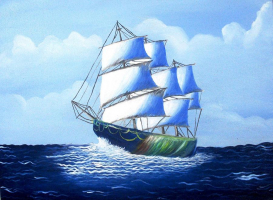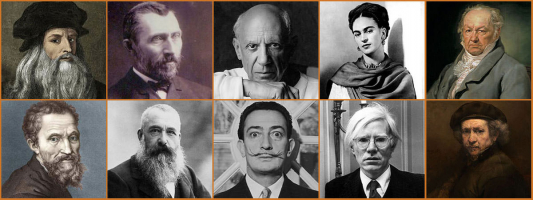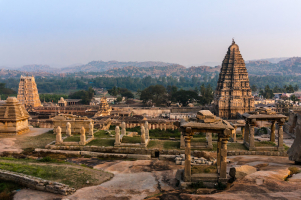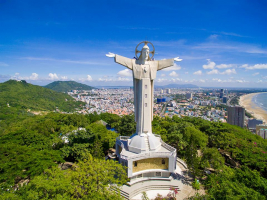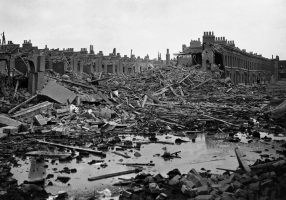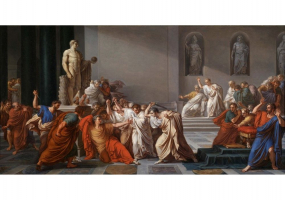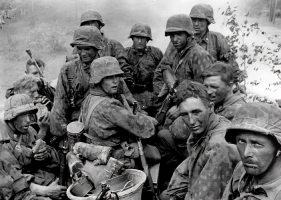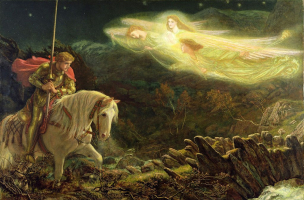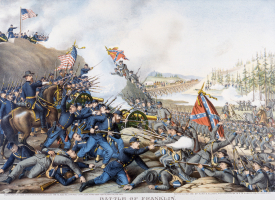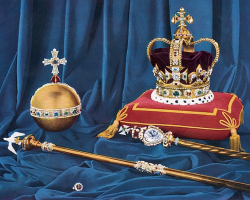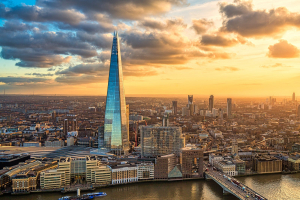Top 11 Wars That Changed The History of The World
Throughout the history of human development, war has played a very important role. On a positive note, the wars that have brought us to the present and some ... read more...decisive ones. Let's find out with Toplist the wars that changed the history of the world!
-
The first position on the list of wars that changed the history of the world is the battle of Gaugamela. The Persia (Persian) empire was the most potent force in the globe prior to this fight, and the Macedonian monarchy was but a minor nation. However, this conflict marked the start of Alexander the Great's epic campaign of conquest.
Alexander displayed his exceptional military prowess by employing strategies that generals still have to learn today while having a force that was many times less than the adversary (47,000 Macedonian soldiers versus 200,000 Persian soldiers). As a result, for the first time in history, shock cavalry appeared on the flanks of the traditional Phalanx formation with soldiers equipped with Sarissa spears up to 5 meters long and placed in the middle. The Phalanx formation routed the Iranian infantry from the front, and Alexander's own Macedonian cavalry launched flank attacks and made great inroads into the Persian center. The leader of the Persian army, King Darius III, withdrew out of fear due to the Macedonian army's valor. The Persians were disheartened and fled when they saw the King leave before the battle was over, which resulted in the loss of the entire army.
The outcome of the conflict marked the beginning of the breakup and fall of the old Persian empire, which was made possible by Alexander the Enormous's great conquests and the legendary Macedonian army with spears. The invincible cavalry and Sarissa. For the first time, a small Greek country overthrew the greatest empire in history. The Hellenistic civilization left its mark on the nations of Central Asia during the early years of Alexander's reign, which spanned from Greece to India.
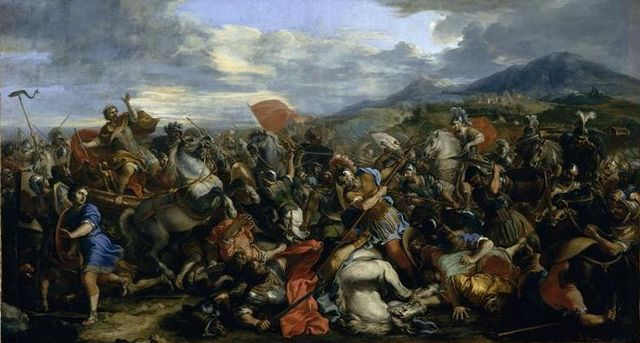
Photo: wikipedia 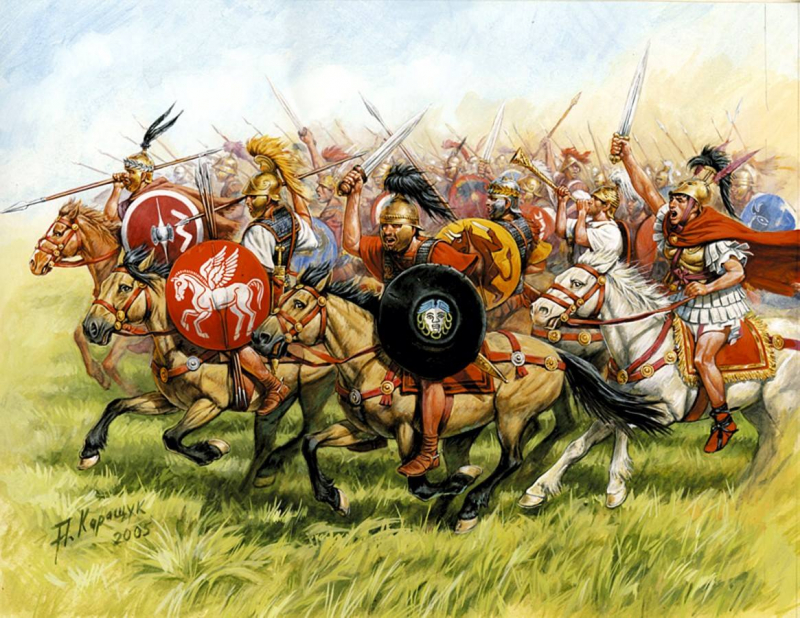
Photo: facebook.com -
Rome and Carthage were the two most dominant ancient city-states in the Mediterranean for a long period of time. Additionally, the decisive fight between Hannibal and Scipio, the two most notable generals of the two sides, took place during the second Punic War, which was also the bloodiest.
With his victory against Cannae, Hannibal is revered as the patron saint of Rome. However, Scipio, who faced off against Hannibal, is also regarded as a genius general for decimating the Carthaginian army in the Iberian peninsula and opening the door for an assault on Carthage. The outcome of the two sides is thought to be decided by the Battle of Zama, and the victor will rule the Mediterranean.
Zama was chosen by Hannibal as the battleground because it allowed him to make use of his advantages with his cavalry and war elephants. Scipio, however, carefully examined the elephant's assault and assisted his soldiers in reducing army deaths. The mercenary cavalry Numidia, who had previously served Carthage, was Scipio's other trump card. At the time, this unit of light cavalry was the strongest in the world and had the capacity to move very quickly and launch javelins. The Numidian cavalry and this army of war elephants will determine whether the war is a success or a defeat.
The Second Punic War came to an end with Rome's decisive victory as Hannibal and Carthage were defeated and the glory belonged to Scipio and Rome. Carthage eventually lost its ability to compete with Rome. Rome's control in the western Mediterranean was established from this point on, marking the start of a later vast Roman empire.
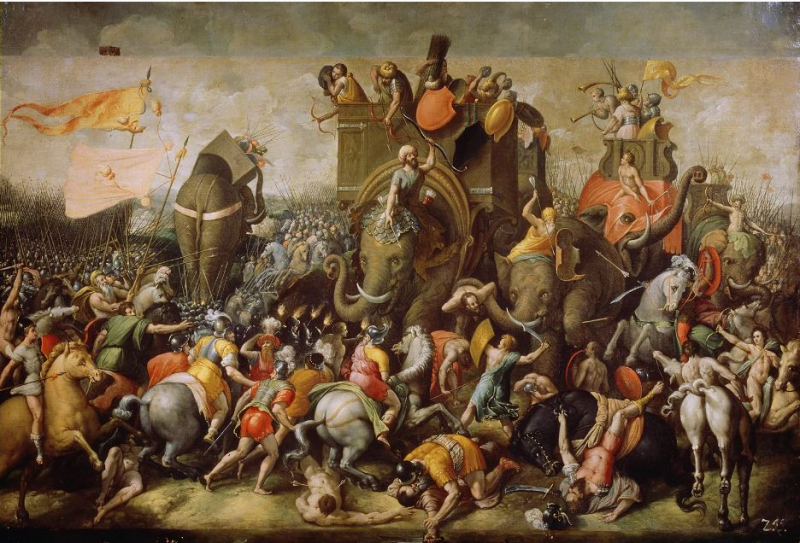
Photo: delphipages.live 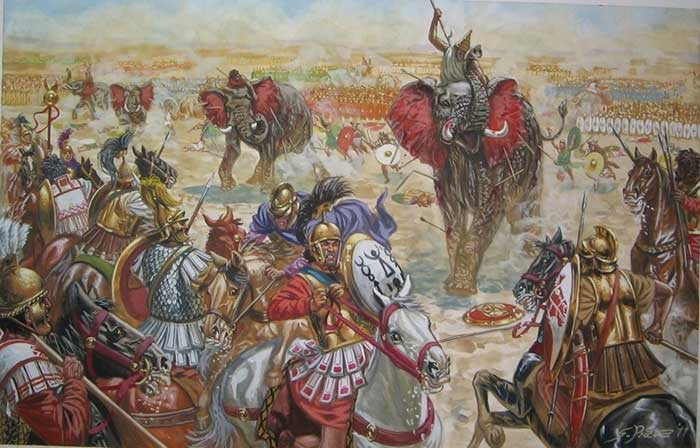
Photo: sites.google.com -
On June 20, 451 AD, a coalition led by the Roman general Flavius Aetius and the Visigothic king Theodoric I engaged the Huns and their vassals, who were under the command of their king Attila, in the Battle of the Catalaunian Plains (or Fields), also known as the Battle of the Campus Mauriacus, Battle of Chalons, Battle of Troyes, or the Battle of Maurica Despite the fact that Germanic foederati made up the majority of the coalition army, it ended up being one of the final significant military actions of the Western Roman Empire.
It is debatable if the conflict was tactically decisive, but the Romans may have prevented the Huns from establishing vassals in Roman Gaul. But the Huns were successful in plundering and pillaging a large portion of Gaul and crippling the military strength of the Romans and Visigoths. Only two years later, in 453, Attila passed away. His Hunnic Empire was destroyed by a coalition of Germanic vassals following the Battle of Nedao (454).
Attila's first defeat prevented him from invading all of Europe, and the Germanic peoples used it as a lesson to combat the Huns on their own in the future. The Chalon's triumph, not only on a political level but also in terms of the culture and religion of this continent, can be regarded to have saved European civilization from the calamity of the invasion by the Asian nomadic army. It is one of the wars that changed the history of the world.
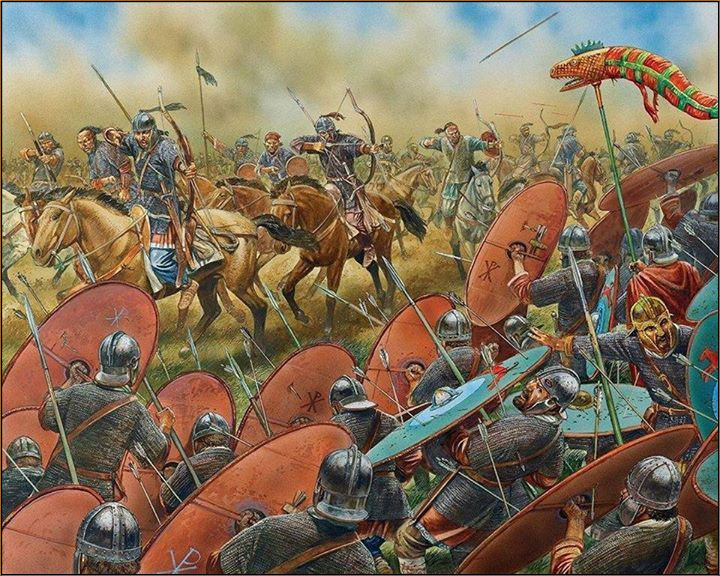
Photo: obsidianportal.com Video: https://www.youtube.com/watch?v=gKLflF60gZs -
The Byzantine Empire's army and the Muslim forces of the Rashidun Caliphate engaged in significant combat at the Battle of the Yarmouk. The conflict took place over the course of several engagements that lasted six days in August 636 south of the Sea of Galilee, close to the Yarmouk River, in what are now the borders of Syria-Jordan and Syria-I Palestine. The fight ended with a total Muslim victory, ending Byzantine rule in Syria. After the death of the Islamic prophet Muhammad, the Battle of the Yarmouk, one of the most important conflicts in military history, signaled the beginning of the first major wave of early Muslim conquests and the quick spread of Islam throughout the then-Christian Levant.
The Arab assault had been halted, and in May 636, Emperor Heraclius had dispatched a sizable expedition to the Levant to reclaim lost land. The Arabs strategically retreated from Syria as the Byzantine army drew near, reassembled all of their forces near the Arabian Peninsula on the Yarmouk plains, where they were bolstered, and beat the numerically larger Byzantine army. The battle solidified Khalid ibn al-reputation Walid as one of history's greatest tacticians and cavalry commanders and is primarily recognized as his greatest military triumph.
The conflict in Yarmouk was a crushing setback that allowed Islam to establish itself in this region by taking control of the Christian Jerusalem and the holy land of Palestine. Since this triumph, Islam has continued to expand and capture new lands: Egypt (642), Persia (651), Islam stretched from North Africa to India, posing a threat to Constantinople, the capital of the Byzantine Empire.
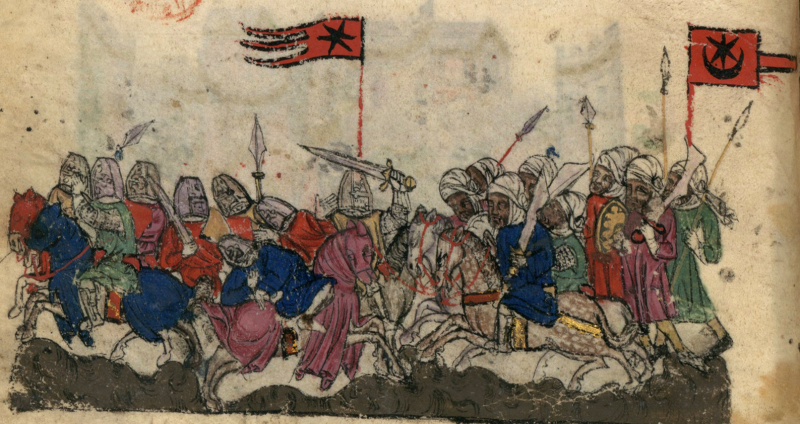
Photo: wikipedia.org 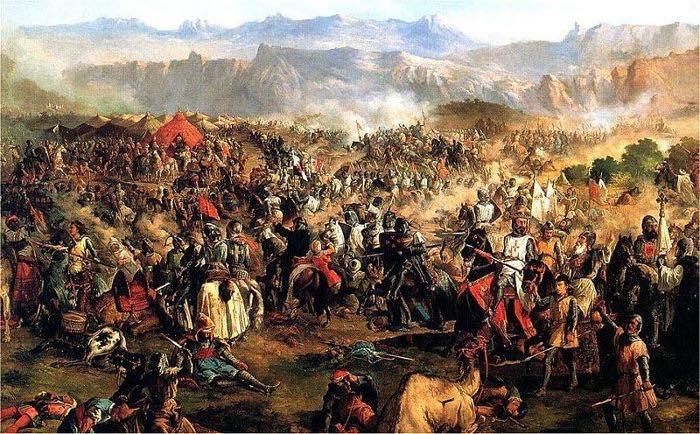
Photo: facebook.com -
The Battle of Tours, which was fought on 10 October 732 and was a crucial engagement in the Umayyad invasion of Gaul, was also known as the Battle of Poitiers and, according to Arab accounts, the Battle of the Highway of the Martyrs. As a result, Charles Martel's Frankish and Aquitanian armies defeated the Umayyad Caliphate's invading army, which was led by Abdul Rahman Al-Ghafiqi, the ruler of al-Andalus.
The surviving sources provide conflicting information regarding the battle's specifics, including the number of participants and its precise location. According to the majority of sources, the Umayyads had a greater force and more losses. Notably, the Frankish soldiers didn't appear to have heavy cavalry in the battle. Near the border of the Frankish realm and the then-independent Duchy of Aquitaine under Odo the Great, the battleground was somewhere between the cities of Poitiers and Tours in Aquitaine in western France.
After the battle, the Umayyad army withdrew after Al-Ghafiqi was slain in action. The conflict contributed to establishing the Carolingian Empire and Frankish rule over western Europe for the following century. Most historians concur that "the Battle of Tours established Frankish hegemony in western Europe and altered that continent's destiny".
The Battle of Tours is a resounding triumph for Christianity's survival that prevents a tsunami of Islam from engulfing all of Europe. While the Battle of Yarmouk was an excellent win for cavalry, Charles Martel's name was forged so that his nephew Charlemagne had a foundation upon which to subsequently establish the Carolingian empire.
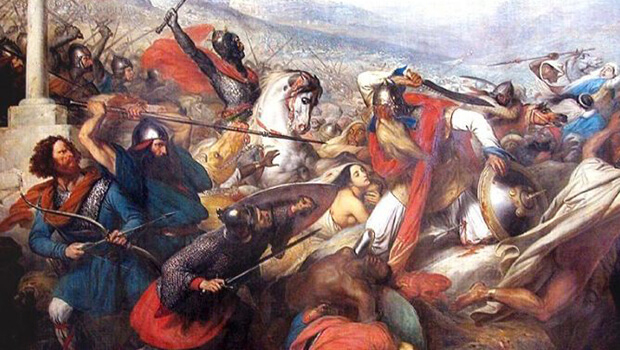
Photo: nghiencuuquocte.org 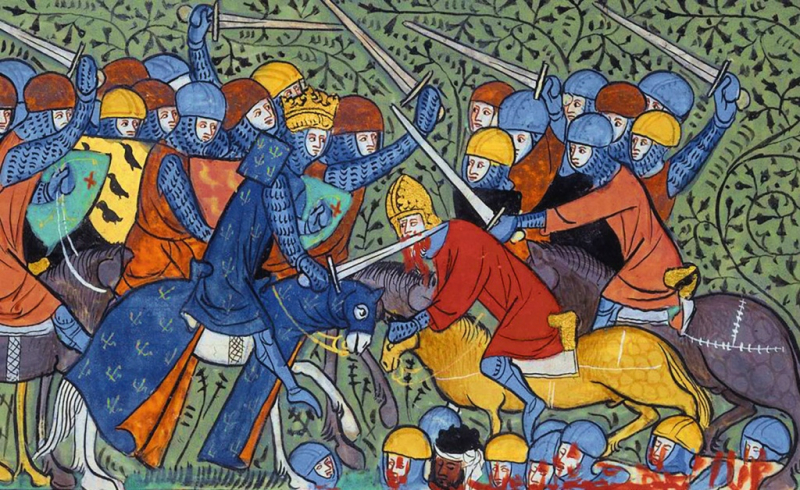
Photo: counterfire.org -
After the imperial capital had been under siege by the Ottoman Empire for two months, the battle of Vienna was fought on September 12, 1683, near Vienna, at Kahlenberg Mountain. The Holy Roman Empire, under the leadership of the Habsburg monarchy, and the Polish-Lithuanian Commonwealth, both commanded by King John III Sobieski, engaged in combat with the Ottoman Empire and its subordinate and tributary kingdoms. It is frequently regarded as a historical turning point when "the Ottoman Turks ceased to be a menace to the Christian world" since it was the first time the Commonwealth and the Holy Roman Empire had collaborated militarily against the Ottomans.
The Polish-Lithuanian Commonwealth, which was only represented by the forces of the Crown of the Kingdom of Poland, and the Holy Roman Empire's combined forces won the fight (the march of the Lithuanian army was delayed, and they reached Vienna after it had been relieved). Leopold I's Holy Roman Emperor Leopold's Austrian subject Ernst Rüdiger Graf von Starhemberg oversaw the garrison in Vienna. John III Sobieski, the king of Poland, who was in charge of the rescue efforts, retained ultimate command.
According to historians, the fight represented a turning point in the 300-year conflict between the Holy Roman and Ottoman Empires known as the Ottoman-Habsburg wars. The Austrian Habsburgs steadily recovered during the 16 years that followed the conflict and came to rule southern Hungary and Transylvania, which had been largely liberated from Ottoman forces. The largest known cavalry charge in history took place during the conflict, which is noteworthy.
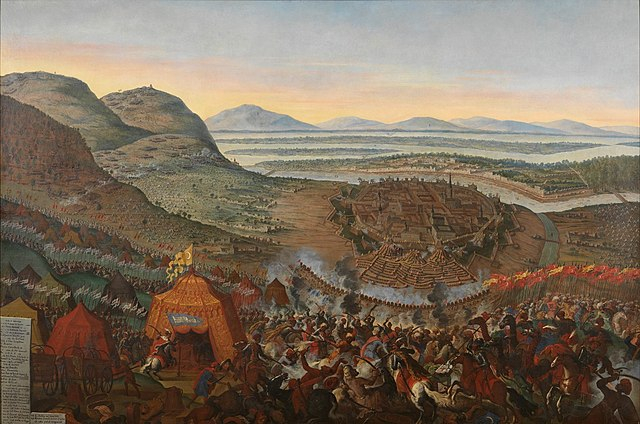
Photo: commons.wikimedia.org 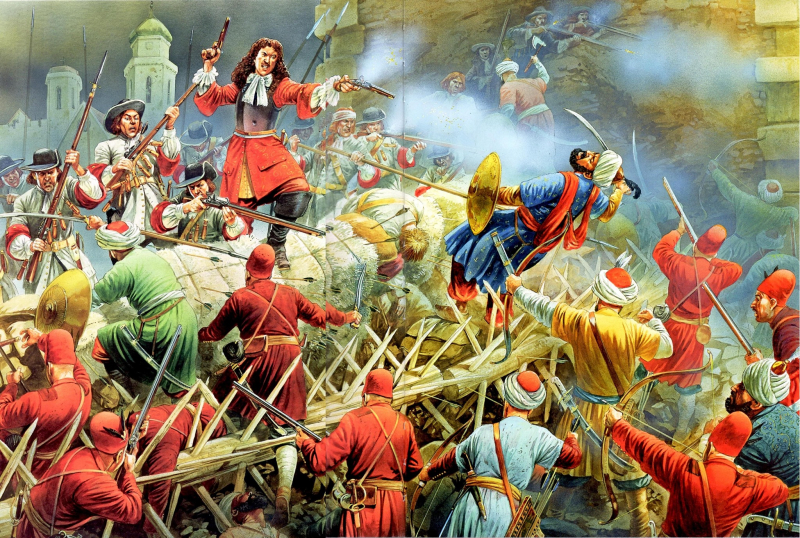
Photo: facebook.com -
The next position on the list of wars that changed the history of the world is the battle of Trafalgar. During the War of the Third Coalition (August–December 1805) of the Napoleonic Wars (1803–1815), which lasted from 1803, the British Royal Navy and the combined fleets of the French and Spanish Navies engaged in battle on October 21, 1805.
This naval conflict, which took place at Cape Trafalgar in Spain between the British Royal Navy and its two main adversaries, the Spanish Navy and the French Navy, is regarded as the most significant naval conflict in human history (more significant than the ancient Battle of Salamis, the Medieval Battle of Lepanto, and Midway during World War 2). The British initially just saw the conflict as a tactical defensive action, but its outcomes had a lasting impact on not only the war in Europe at the time but also on the course of history for decades to come.
The decisive naval victory of the Napoleonic wars came at the Battle of Trafalgar. In addition to decimating the French and Spanish navies, the British also laid the foundation for their dominance of the seas for the following 100 years, ushering in the illustrious Victorian era in British history. The conflict also marked the end of sailing ships and the beginning of steamships, two significant human scientific advancements.
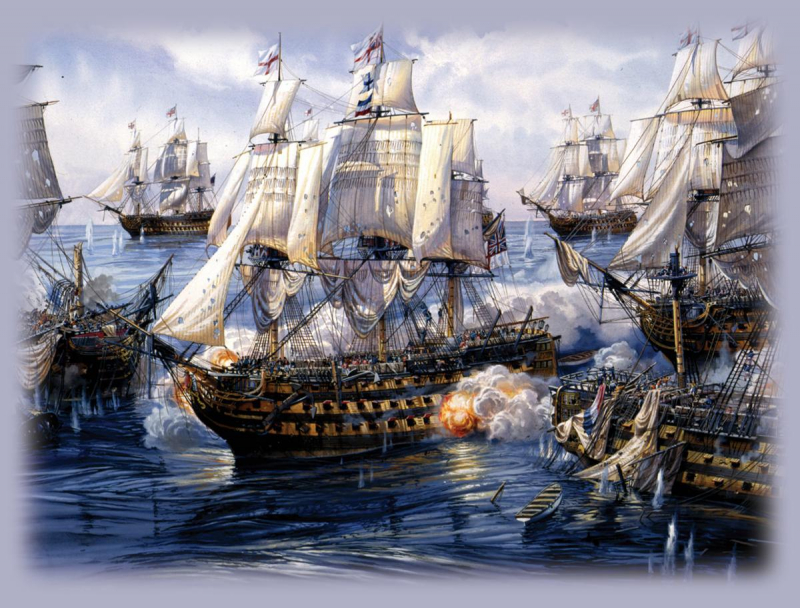
Photo: usni.org 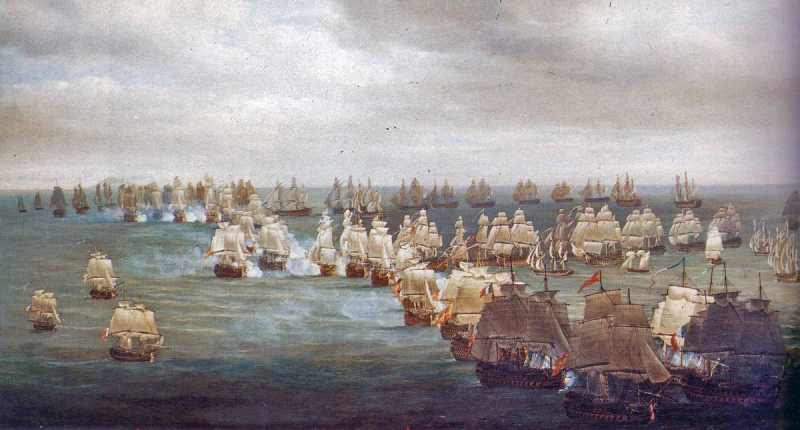
Photo: brishtishbattels.com -
The Battle of Leipzig, also known as the Battle of the Nations, took place in Leipzig, Saxony, from October 16 to 19, 1813. The Grande Armée of French Emperor Napoleon I was soundly defeated by the coalition forces of Austria, Prussia, Sweden, and Russia, under the command of Tsar Alexander I and Karl von Schwarzenberg. Polish and Italian soldiers were also included in Napoleon's army, along with Germans from the Confederation of the Rhine. The battle, which was the finale of the German Campaign of 1813, involved 560,000 soldiers, 2,200 pieces of artillery, 400,000 rounds of artillery fire, and 133,000 wounded. It was the biggest combat in Europe before World War I.
Napoleon was forced to return to France after being soundly defeated once more, and the Sixth Coalition maintained its momentum by dissolving the Confederation of the Rhine and invading France early the following year. In May 1814, Napoleon was forced to resign and was banished to Elba.
The Union of Russia, Austria, Prussia, and Sweden won the Battle of Leipzig with a resounding victory, bringing about the fall of the French Empire and compelling Napoleon to abdicate for the first time. This was his most painful loss against foes he had previously easily conquered, and it was also the heaviest loss, entirely shattering his reputation, compared to the Battle of Waterloo. From this point on, Prussia and Russia assumed the position of the former great power that was France. The liberation of the southern states from the French and the subsequent start of Germany's process of national reunification gave the triumph significant significance to the German people.
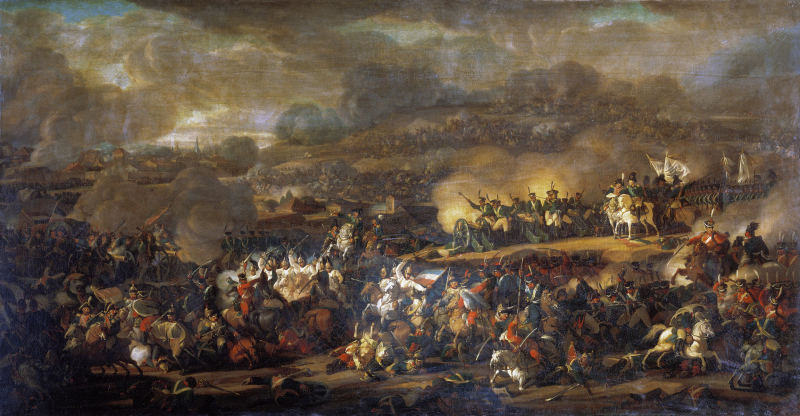
Photo: wikipedia.org 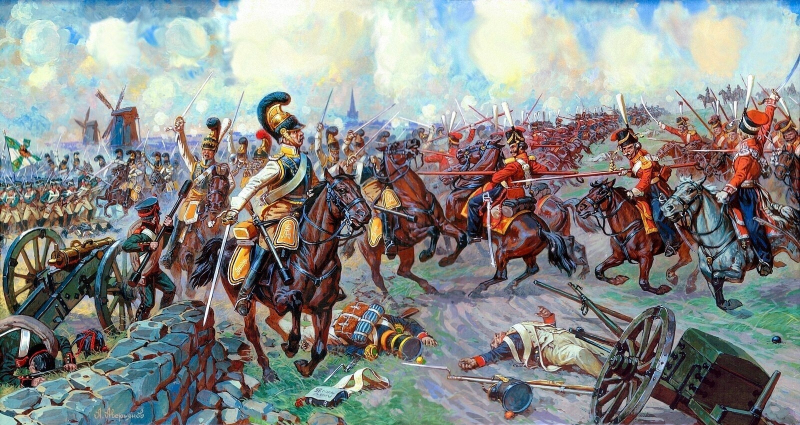
Photo: lichsucogihay.com -
The final significant German offensive on the Western Front during the First World War took place during the Second Battle of the Marne (15 July–18 July 1918). When an Allied counterattack, supported by several hundred tanks, overpowered the Germans on their right flank and caused significant fatalities, the attack was a failure. The unrelenting Allied offensive resulted in the Armistice with Germany around 100 days after the German defeat was launched with the German defeat.
The French found it humorous since the German defeat was compared to the old Leipzig fight, where Napoleon was vanquished by the Austro-Prussian-Russian alliance. In actuality, the Second Battle of the Marne played a similar function to the Battle of Leipzig. Similar to Napoleon's French Empire, this setback also signaled the end of the Second German Empire.
The turning point in World War I was the Second Battle of the Marne. marked the Germans' total defeat throughout the whole war, not only in their 1918 counteroffensive campaign. The German army utterly disintegrated from this point on, and three months later, Germany lost the conflict, the German emperor abdicated, and the second German empire fell. The new world order that serves as the cornerstone of modern society also had its start from this point. It is one of the wars that changed the history of the world.
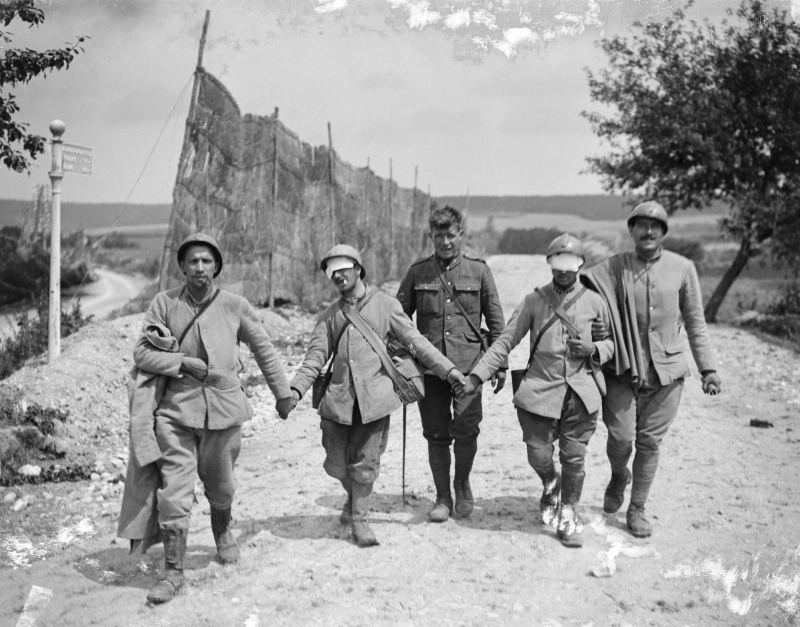
Photo: wikimedia.commons 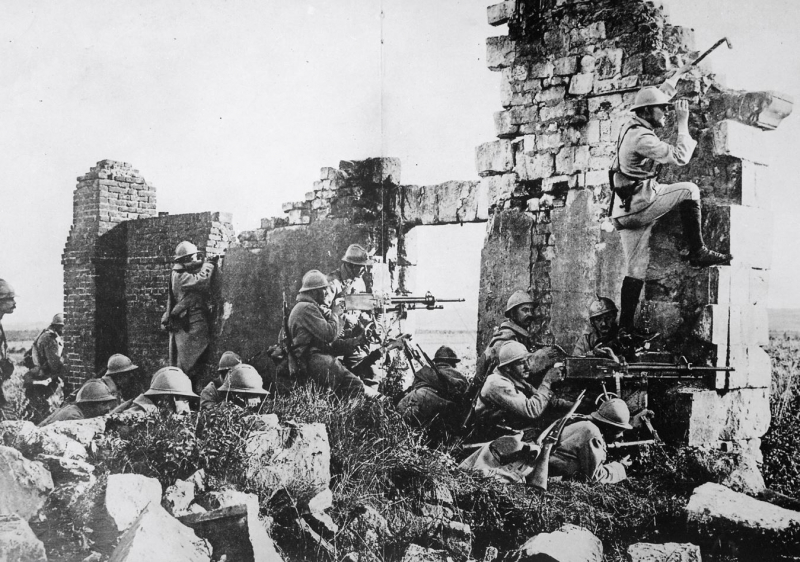
wikipedia.org -
During the Battle of Stalingrad, which took place from 23 August 1942 to 2 February 1943, Nazi Germany and its allies attempted in vain to seize control of the Southern Russian city of Stalingrad (later renamed Volgograd) from the Soviet Union. The fight was the definition of urban warfare, featuring intense close-quarters action and direct airstrikes against people. With an estimated 2 million overall losses, the Combat of Stalingrad was both the deadliest battle to occur during the Second World War and one of the bloodiest wars ever.
As a result of the Oberkommando der Wehrmacht being compelled to evacuate large military troops from other parts of occupied Europe in order to make up for German losses on the Eastern Front, the Battle of Stalingrad is now unanimously considered the turning point in the European Theatre of War. The Red Army was galvanized by the victory at Stalingrad, which also tipped the scales of power in the Soviets' favor.
The Soviet Union switched from a defensive posture to a full counterattack against the Germans, which resulted in the crucial Battle of the Kursk Arc. the situation in Europe. This was the critical victory and turning point of the Eastern European front as well as the entire Second World War. Victory! As he did during the Napoleonic conflict or the Battle of Moscow, Winter once more saved Russia and the Soviet Union from calamity. The Soviet Union and Communism used the Battle of Stalingrad as a platform to stand their ground and defeat Nazism, altering the course of the world history for all time.
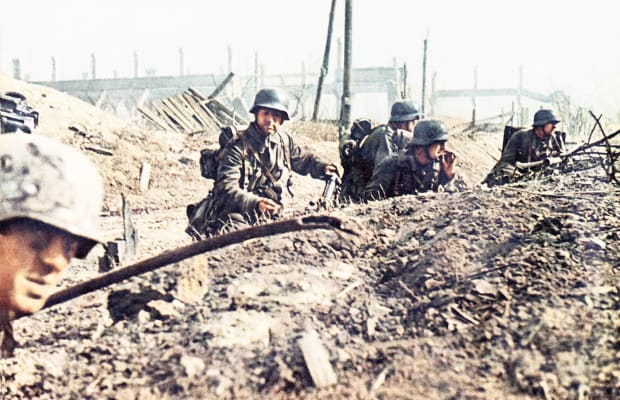
Photo: history.com 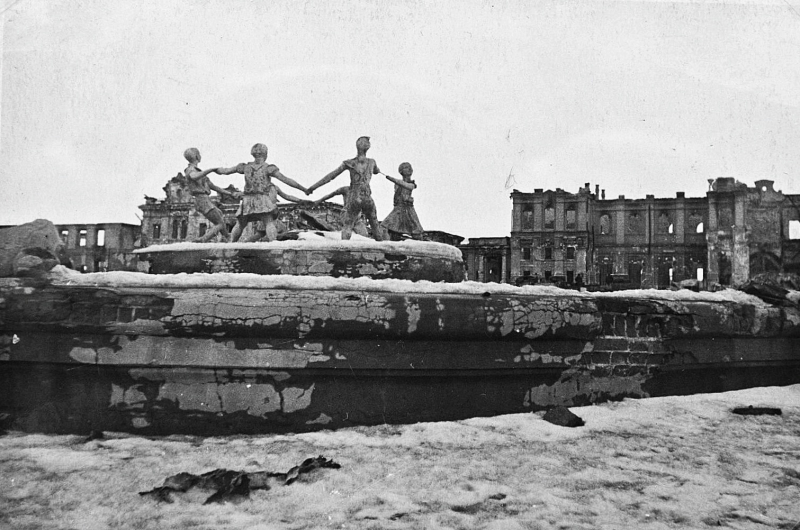
Photo: wikipedia.org -
The American Civil War Battle of Gettysburg fought from July 1 to July 3, 1863, is regarded as its pivotal encounter. The Civil War's turning point was the Battle of Gettysburg. The three-day combat was the worst of the conflict, with over 50,000 estimated losses. Union triumph. Confederate general Robert E. Lee's bold plan to invade the North and end the Civil War quickly was thwarted at Gettysburg. The Confederate States of America's dreams of independence were crushed by the defeat there.
Lee's goal was to triumph in a battle north of the Mason-Dixon line in the hopes of forcing a negotiated conclusion to the fighting after a year of defensive wins in Virginia. That objective was thwarted by his defeat at Gettysburg. Instead, the vanquished commander made his escape to the south while leading a wagon train of injured soldiers toward the Potomac. Meade, the Union general, missed a crucial chance to trap Lee and compel a Confederate to surrender by choosing not to follow the withdrawing army. Another two years passed as the vehemently polarizing war continued.
Lee, who was demoralized by the Gettysburg loss, attempted to resign but was rejected by President Jefferson Davis. The Battle of Gettysburg decisively shifted the Civil War's balance of power in the Union's favor, despite the fact that the great Confederate general would go on to achieve further successes.
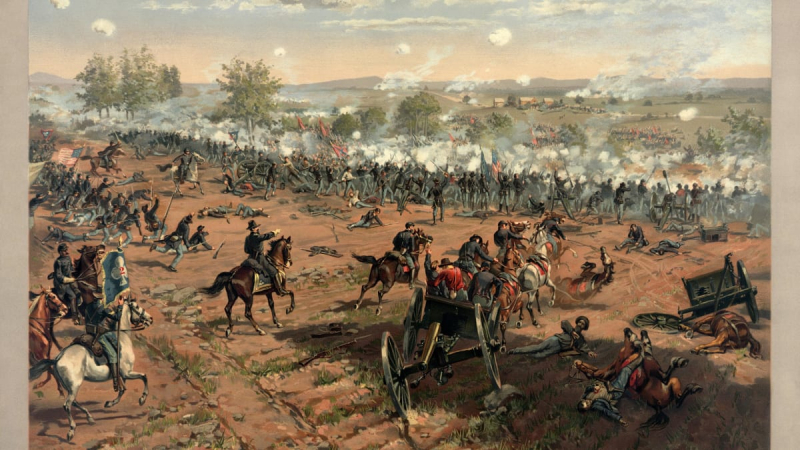
Photo: historyhit.com 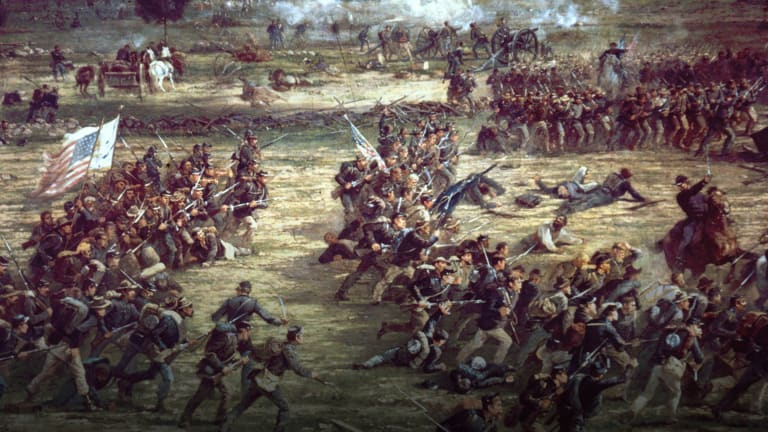
Photo: history.com














